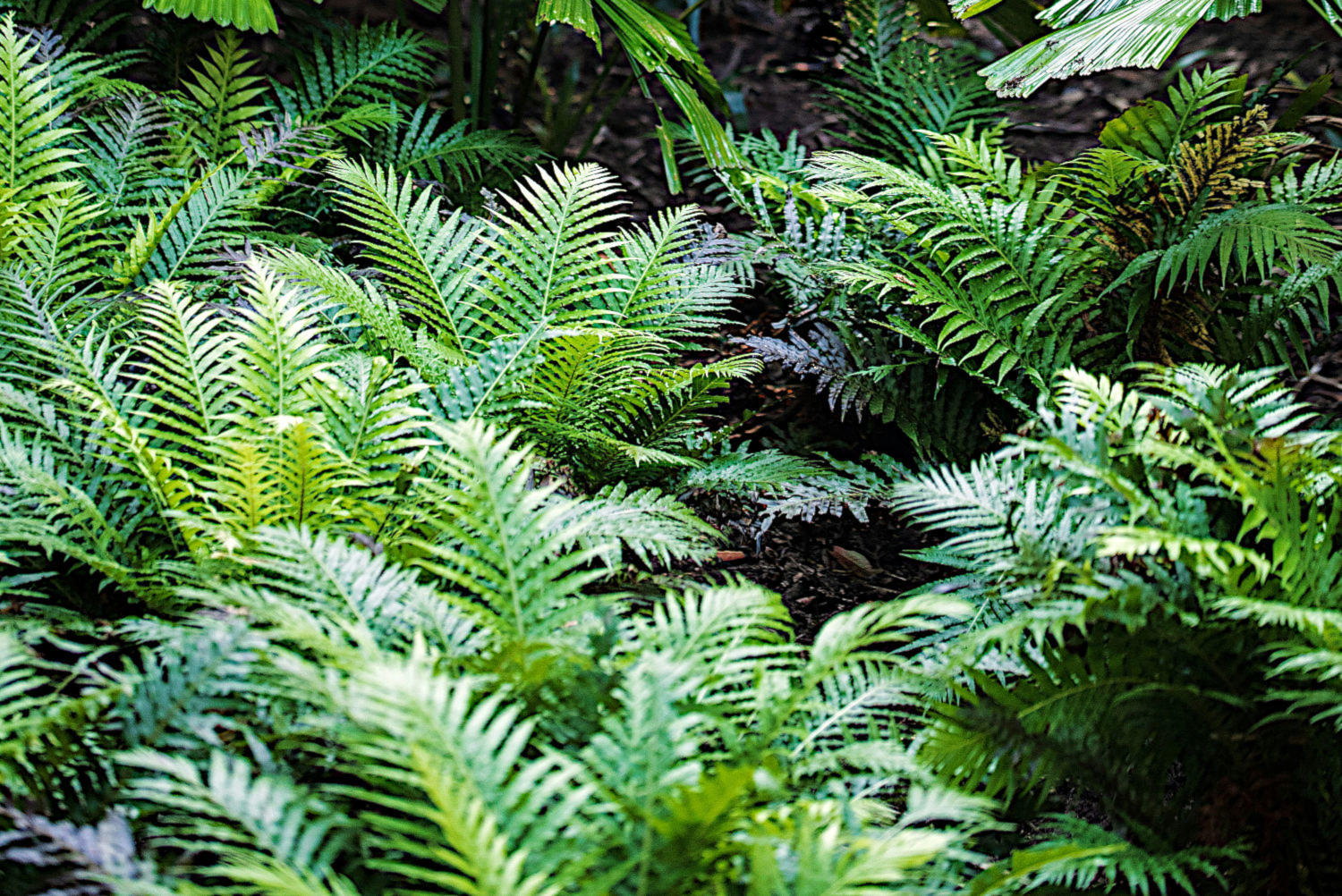Our brief involved designing an easily manageable, and low maintenance Woodland Edge planting scheme for this partly shaded garden, with a focus on evergreens, perennials, textures and foliage as a peaceful and relaxing outdoors space.
The Brief – Sanctuary Woodland Edge Garden
Requirements: Easily manageable, and low maintenance planting scheme in newly landscaped garden. Year round colour and interest and attract wildlife.
Uses: Space for peace/relaxation, with an harmonious colour scheme.
Position: South facing rear garden. Some areas deeply shaded for significant portions of the day due to mature tree and shrub coverage.
Style: Informal/rustic.
Colour Palette: Greens and foliage greens, whites, blues. Green and cream – harmonious not clashing. No reds, bright yellows (berries OK).
Soil: Medium clay.
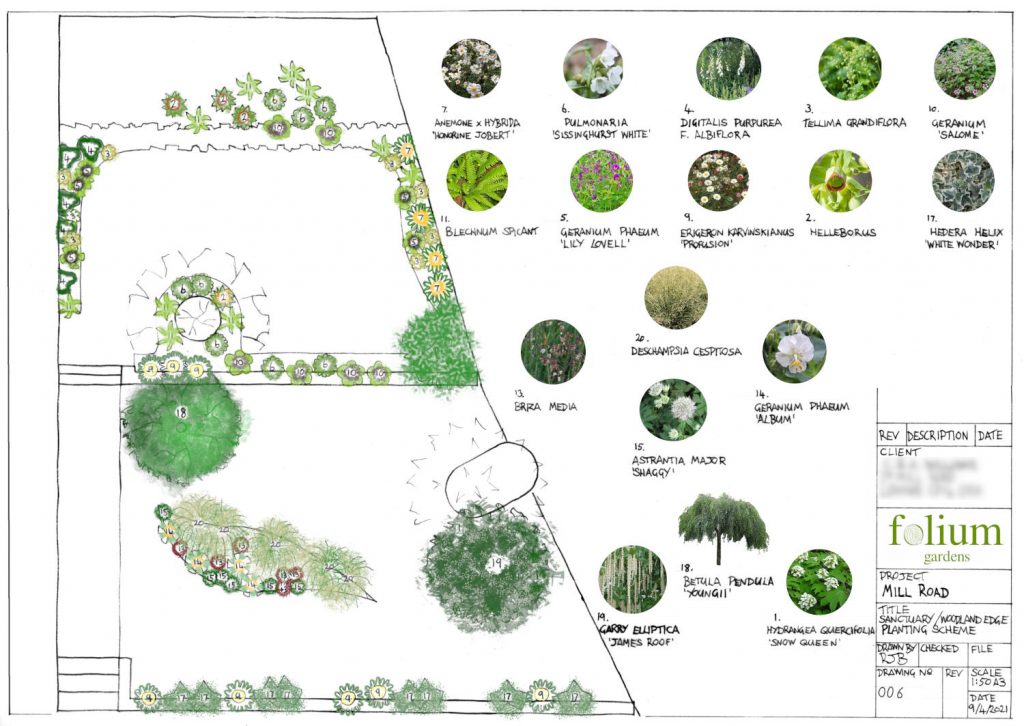
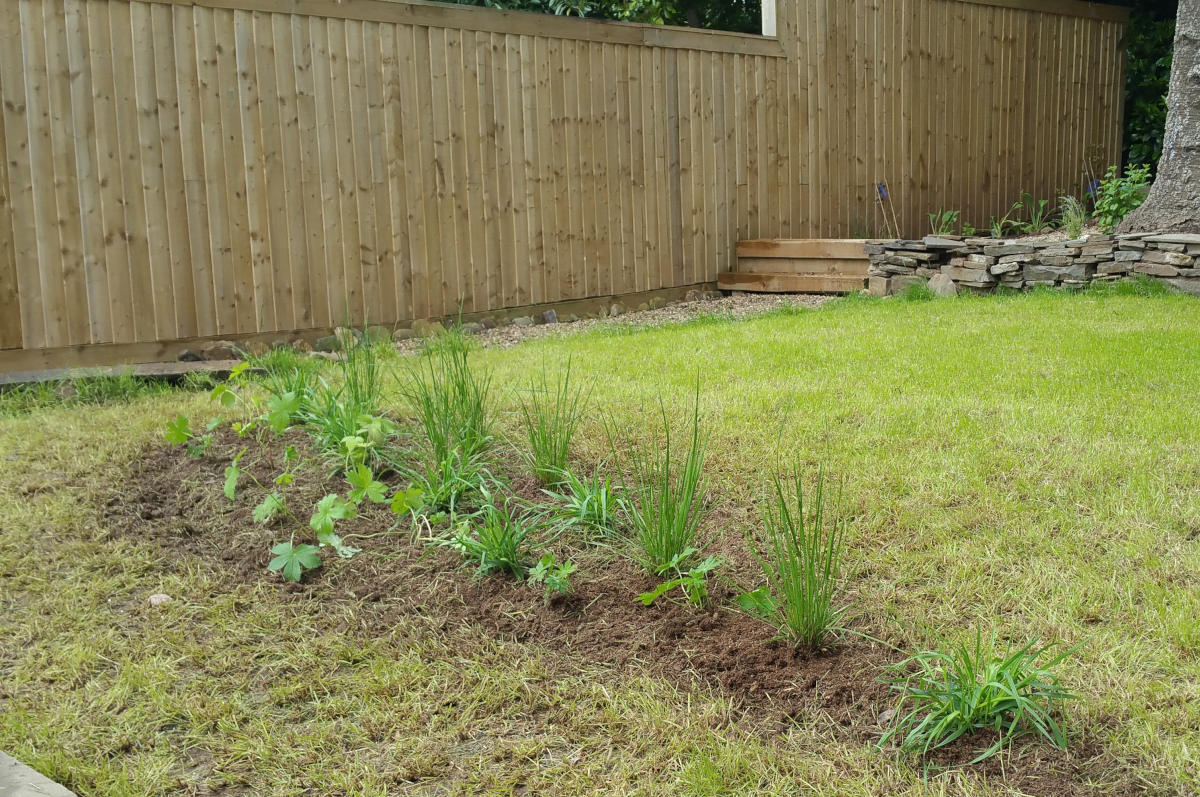

Problem Areas
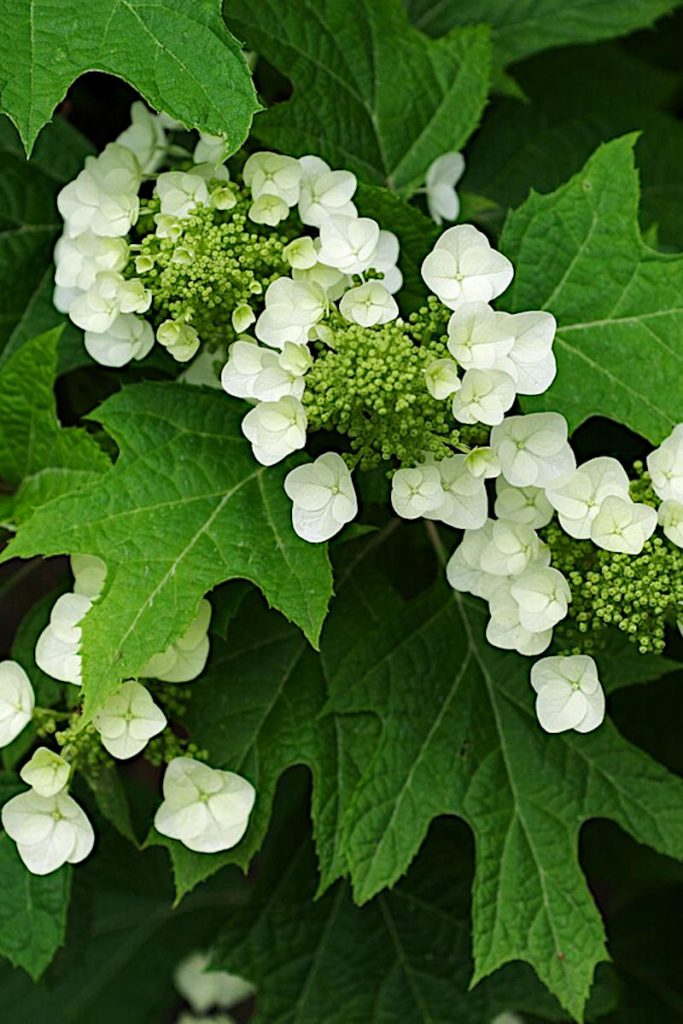
- Originally a sloping site, now levelled with two separate terraced areas, each lacking visual appeal.
- Two very dominant, long, boundary fence lines and a strongly tapering shape.
- A huge Monkey puzzle tree – Araucaria araucana, with a T.P.O. The primary visual experience is of a bare trunk, not so much a complete tree.
- An awkwardly positioned conifer from the neighbouring property created visual disruption.
- Some parts shaded for significant portions of the day due to mature trees and shrubs, alternating with hot, dry areas, limiting plant choice.
- Poor soil. With mature trees taking water and nutrients and other areas relatively poor draining with poor structure after the landscaping work.
Our Solutions
- Visual Balance: We carefully selected plants to balance the visual impact of the narrow and sloping site, ensuring that the garden felt cohesive.
- Tree trunk camoflage: Removing trees is never something we encourage, just as long as they are healthy and safe. And with a T.P.O, this was not an option. So we introduced a beautiful weeping Betula pendula tree, to camouflage the exposed monkey puzzle trunk, thereby lessening its visual impact.
- New Vertical Structures: To break up the monotony of the flat, horizontal lines, we introduced larger shrubs to add height and interest.
- Distinct aesthetic: Give each terrace its own distinct aesthetic / character, whilst also ensuring transition and overall cohesive design to the whole garden.
- Reduce the visual impact of the fences with a dark wood stain and evergreen climbing shrubs.
- Soil improvement: Adding good quality soil improver to problem areas to support plant health.
- Design aesthetic: use of gravel pathways, recycled/salvaged materials, bricks etc. to complement naturalistic planting scheme.
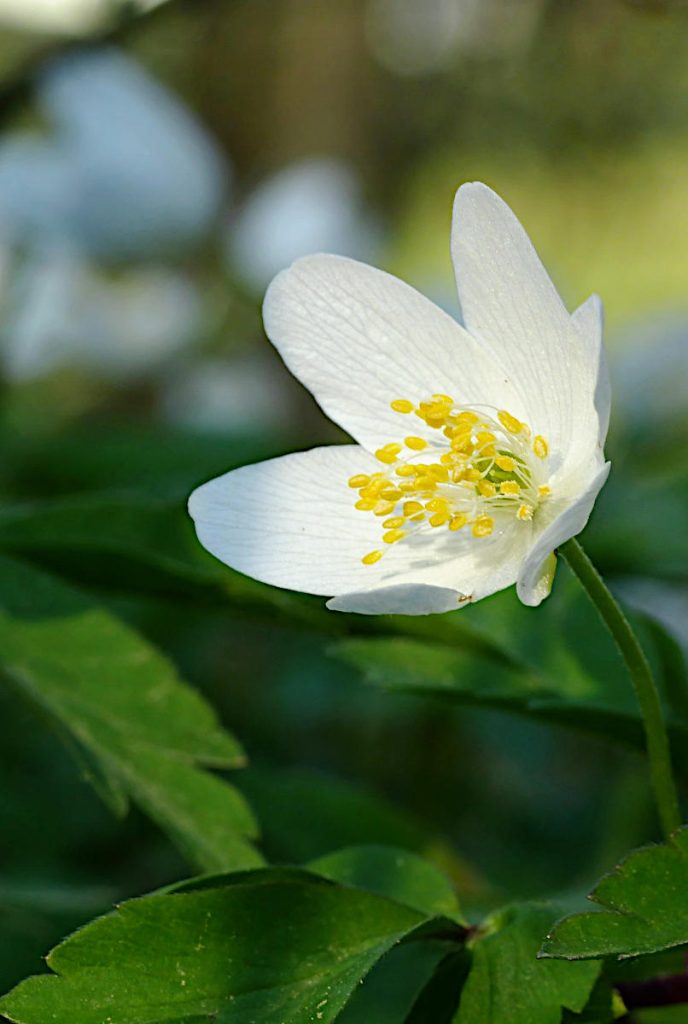
Sanctuary Woodland Edge Garden – Planting Scheme
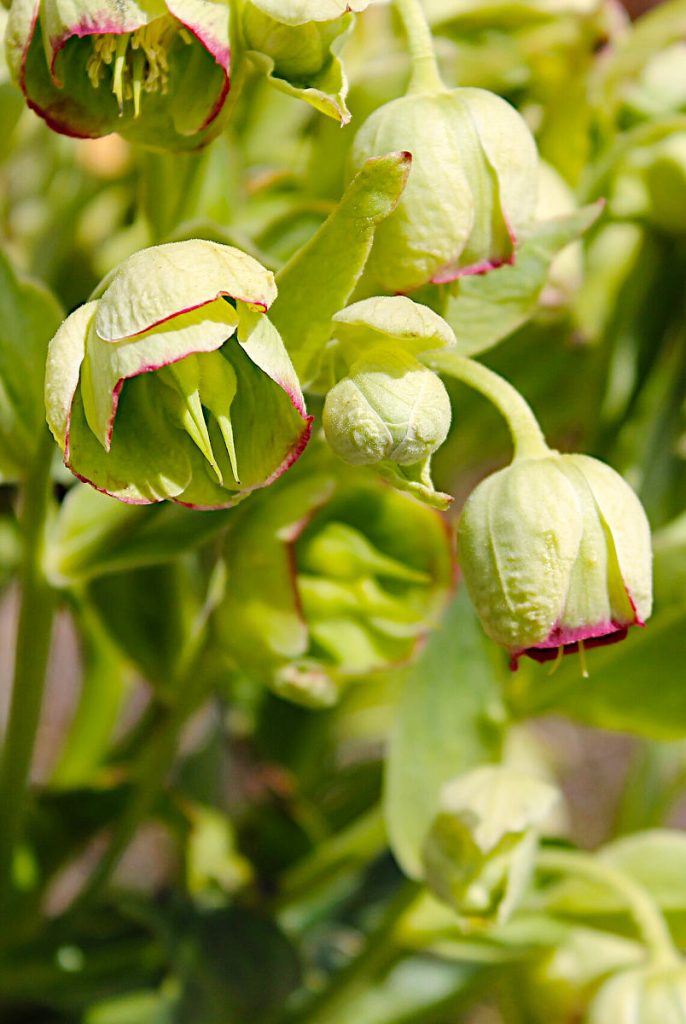
The planting scheme was designed to evoke a sense of tranquility, with a focus on year-round interest. We used perennials, evergreen and semi-evergreen shrubs and climbers which flower at different times of year, with foliage colours that change across seasons. The colour palette of greens, whites, blues, and purples created a calm and cohesive look.
The plants were carefully selected to be hardy, easy to care for, and suitable for local soil conditions. Many have been given RHS Award of Garden Merit (AWM) status.
Some Of The Plants We Used
Hydrangea quercifolia combines particularly well with shade-tolerant perennials such as digitalis, Japanese anemones, hardy ferns and ivy.
The Anemone x hybrida ‘Honorine Jobert’ is a beautiful white Japanese anemone. It has vine like stems, and will flower from August to October. These grow well in a semi-shaded spot where the flowers will really shine out.
The existing Rhododendron along the rear of the garden is well-suited to an informal woodland-style. Because of this we underplanted with pulmonaria, ferns and hellebores in pinks and whites.
These work exceptionally well with Tellima grandifolia (Fringe Cups), as well as Digitalis purpurea f. Albiflora. Together these form an elegant combination with the dark flowers of Geranium phaeum ‘Lily Lovell’.
Brunera macrophylla ‘Jack Frost’ produces forget-me-not like flowers in April and May and silver dusted leaves and complements the hellebores and herbaceous geraniums. Flowering season is extended by underplanting with spring-flowering bulbs, such as Anemone nemorosa (wood anemone) and Galanthus (snowdrop).
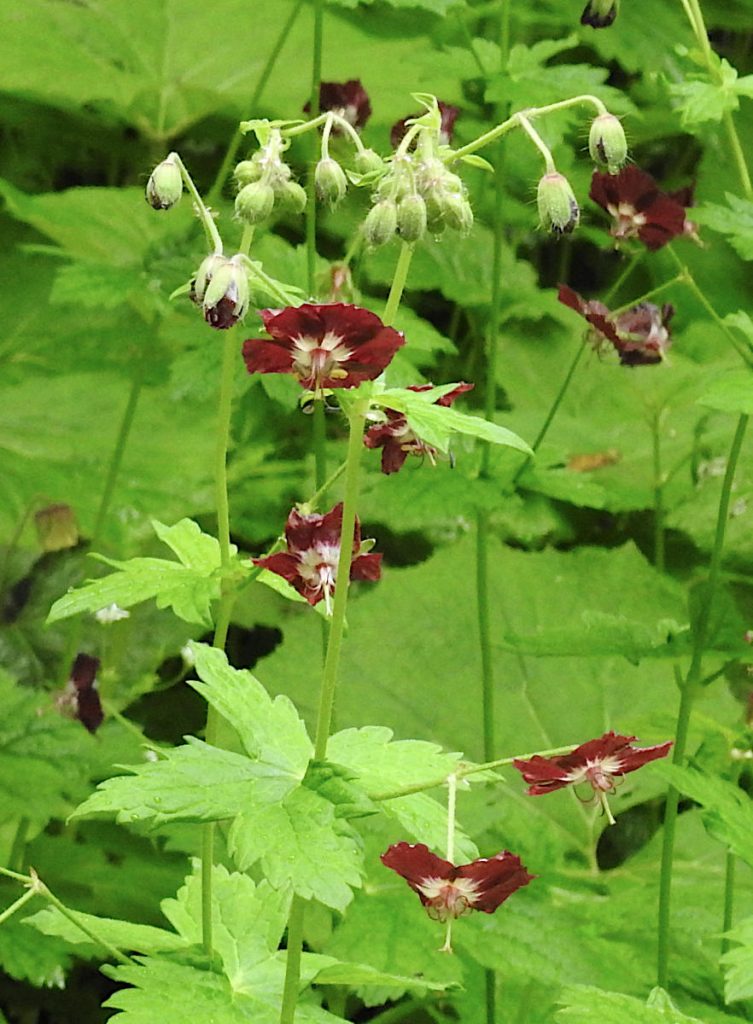
Acknowledging Zen
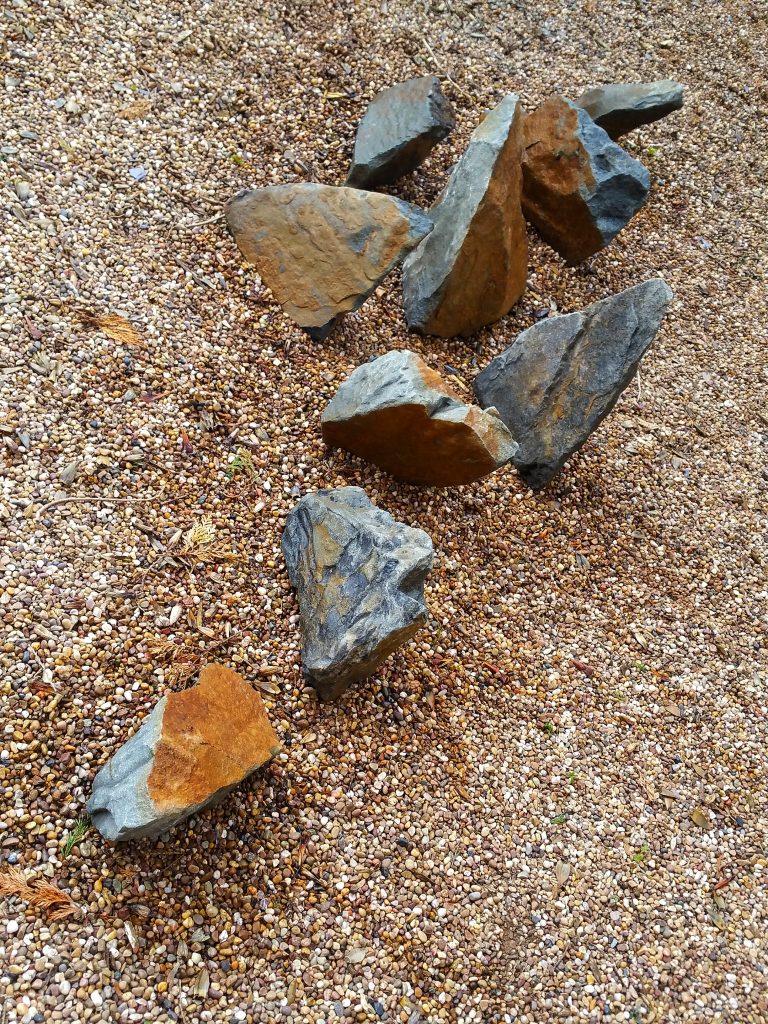
With carefully chosen plants and thoughtful design, we transformed a challenging space which once lacked character into a tranquil retreat. The design combined natural elements – use of gravel, recycled/salvaged materials, bricks etc. which complement the naturalistic planting scheme, creating a balanced and harmonious garden that will continue to evolve over time.
There is seating area in the top right corner, and to make this space more contemplative, we sourced large, feature rocks, which we carefully arranged to form a sculptural focal point that also echoes the shape of the new bed in the lower tier. This arrangement not only serves as a visual anchor for the space, but also draws inspiration from traditional Japanese Zen gardens, where rocks and natural elements are used to create harmony and tranquility. The addition of this stone feature encourages contemplation, allowing the space to become a true sanctuary that invites both quiet reflection where the mind can unwind, and the beauty of nature can be fully appreciated.

